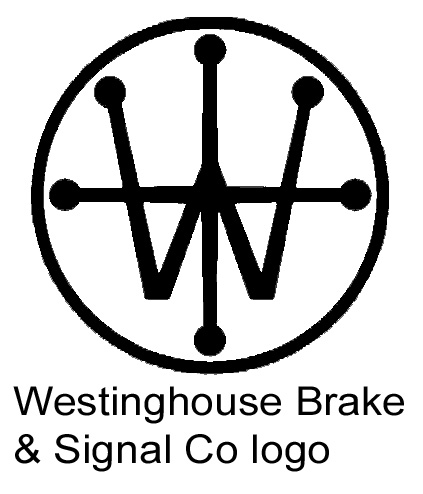
You may be wondering why Westinghouse appears in my list of English semiconductor manufacturers: the English company Westinghouse Brake & Saxby Signal Company (WB&S), later just Westinghouse Brake & Signal Company, was a major manufacturer of railway equipment, including metal rectifiers over a long period, and semiconductors too, both germanium and silicon types. Information on the company history is to be found in Grace's Guide, however there is also a book on the Web devoted to the company history that gives more detail.
Although George Westinghouse was involved right at the start in 1871, various mergers and takeovers occurred before the company named 'Westinghouse Brake & Saxby Signal Company Ltd' came into existence in 1935. Westinghouse Electric Corporation had no interest or control over the English organisation, which used the term 'Westinghouse Brake' as a noun adjunct describing what they intended to manufacture. There is anecdotal evidence that the employees were very fierce in correcting people (journalists and salesmen from other companies) who made the mistake of assuming WB&S was American-owned. Do not confuse WB&S with the British Westinghouse Electric and Manufacturing Co., which was indeed a subsidiary of Westinghouse Electric but did not manufacture semiconductors.
To add potential confusion, the English and American companies used logos on semiconductors that are similar, but do differ in detail. These are shown on the right.
This is relevant to the story of Herbert Mataré and Heinrich Welker, who invented the transistor independently of Bell Labs. They were working for the French Compagnie des Freins & Signaux Westinghouse in Aulnay-sous-Bois near Paris. The name indicates that this was a subsidiary of the English company, NOT the American one as stated on radiomuseum, and this is borne out by the French company's logo, visible on the radiomuseum page, which is identical to the English Westinghouse Brake & Signal Company logo. Grace's Guide states that the English company had 'several foreign companies' as divisions but gives no details.
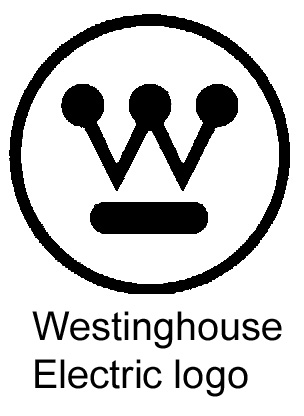
Returning to the English company, it (and its predecessor) manufactured metal rectifiers from about 1925 onwards and one can usually find for sale on eBay copies of a booklet entitled 'The all-metal way' dating from the 1930s. It is essentially a catalogue of metal rectifiers, including some small packaged cylindrical copper-oxide ones that were branded 'Westector'. Again, radiomuseum wrongly states that these were made by the US Westinghouse Electric despite original documents on the site clearly showing that this is false, and even wikipedia has repeated this error. WB&S also made many selenium rectifiers, some of the older ones under the 'Westalite' brand.
Unfortunately it is harder to find information about their production of germanium devices. I have no original data books or sheets published by WB&S, and would welcome originals or scans of any. The 1958 'Wireless World Radio Valve Data' book contains a number of germanium diodes made by Westinghouse Brake & Signal Co., as well as a larger number of metal rectifiers. The 1966 issue of the same book contains many more diodes, by now made of silicon, and including thyristors but still no transistors. The company's manufacturing plant has always been in Chippenham.
The book about WB&S states that the company was sold to the Hawker Siddeley Group in 1979. By that time the operation had been split into five separate companies, Westinghouse Signals, Westinghouse Brakes, Westinghouse Davenset Rectifiers, Westinghouse Foundry, Westinghouse Systems and Westcode Semiconductors. Westcode still exists as part of IXYS Corporation, itself now part of Littelfuse, and specialises in high-power semiconductors. An eBay search reveals many high-current thyristors and diodes, often in a disc capsule outline.
If you can provide more detail about Westinghouse Brake & Signal Co/Westcode semiconductor devices, please
It's a bit of a diversion, because my main interest is germanium devices, but I have acquired a number of early metal rectifiers by WB&S and show them here.
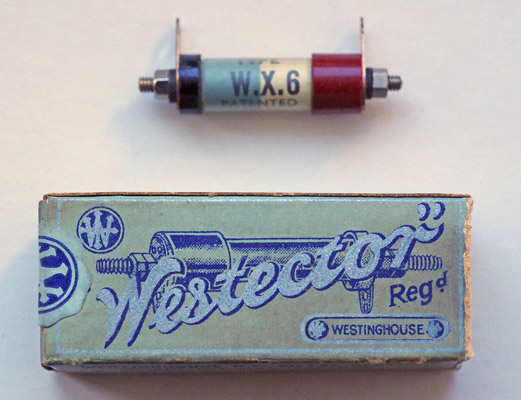
This image shows a copper-oxide Westector type W.X.6 with its original box. It contains a sheet 'Instructions for Use' dated March 1934. The part number of Westectors is presented in a rather variable way: WB&S themselves sometimes use W.X.6 and sometimes WX.6, and data publications often omit the periods completely, resulting in WX6. I have discovered a partial scan of a another publication also called 'Westectors - instructions for use', but with a handwritten annotation 'June 1956', which describes Westectors thus:
Westectors are small copper-oxide rectifier assemblies designed for use in high frequency circuits. All Westectors with W type elements have the negative end of the assembly dotted green, the positive end being red. All Westectors with WX type elements have the negative end of the assembly dotted black, the positive end being red. The number of elements in the Westector is marked on the body.
The document lists Westectors with part numbers:
- W.1, W.2, W.3, W.4, W.6 250µA types ranging from 6V to 36V in 6V steps
- WX.1, WX.2, WX.3, WX.4, WX.6 100µA types ranging from 6V to 36V in 6V steps
The device consists of a set of elements in series because a single copper-oxide-on-copper junction can only withstand a low reverse voltage, about 8 Volts (the spec. above only allows for 6).
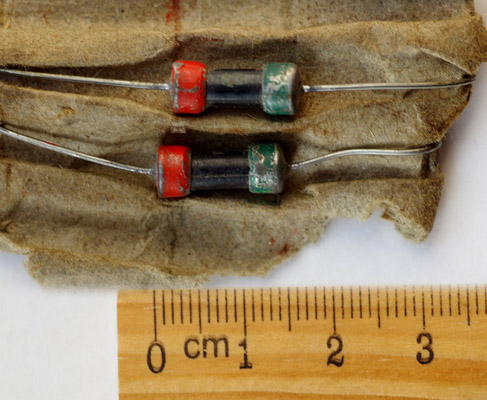
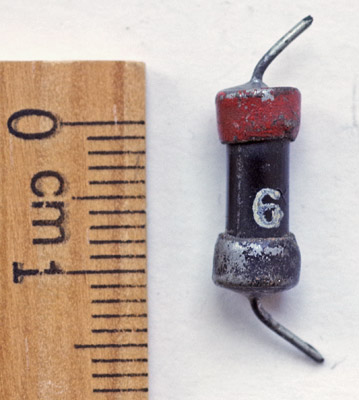
I have this unbranded small cylindrical device, with one red and one black end cap, and printed 6 in white on the black body. For a long time I was unsure what it is but whilst researching Westectors I came across an article in Wireless World for April 1945 (!) and an advertisement in the same magazine for June 1946, which conclusively show that this is a 'miniature Westector'. I was puzzled because it does not have a paint dot on the negative end, but then I purchased the two shown, which have one green end cap, and are also marked 6 on the body. Those must be type W.6 and my original must be a type W.X.6.
A Web search shows similar devices in old Avometers and the excellent 'Radiomuseum' site shows two in a Moreton Cheyney receiver from about 1947.
I would like to obtain original data for thes devices, for example the 'Data Sheet No. 47' mentioned in the advertisement. If you know where I might get data (or indeed more devices), please
I also have found that the book 'Wireless World Radio Valve Data 1958' lists WB&S copper-oxide rectifier types W1 to W15, WX1 to WX15, plus several KF, KG and KH types. The list includes W5 and WX5 which seem doubtful. All these devices are in the 'semiconductor diodes' section, not the 'metal rectifiers' section.
I would like to obtain any other Westector types for my collection. If you know where I might get any, please
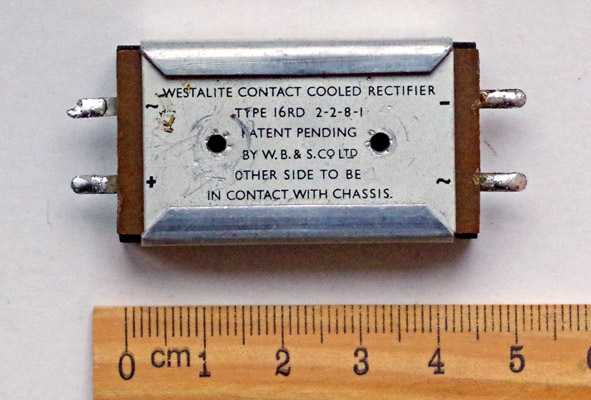
Turning to selenium rectifiers, I have this selenium rectifier type 16RD.2-2-8-1 printed WESTALITE CONTACT COOLED RECTIFIER. This type is listed in the 1958 Wireless World 'Radio Valve Data' 6th edition. WB&S made a series of rectifiers of several different types with coded part numbers like this. 16RD.2-2-8-1 is a bridge rectifier rated at 260V 40mA.
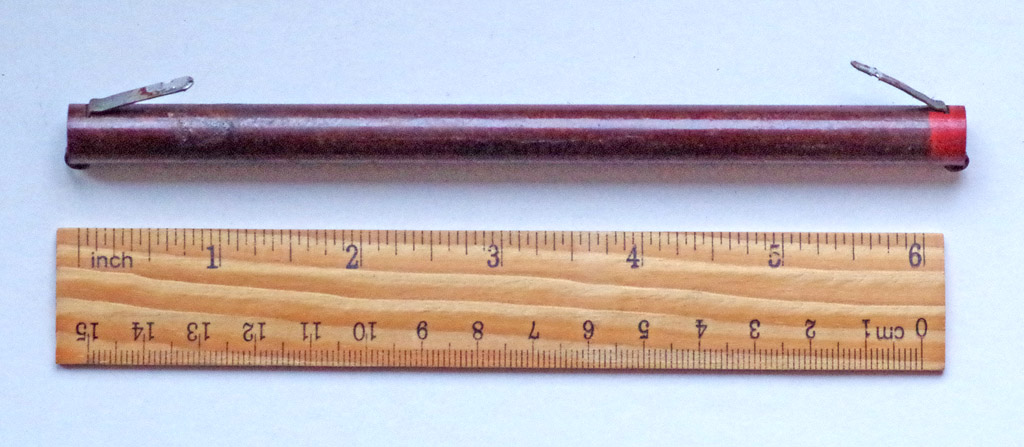
I also have a couple of these 36EHT115 high-voltage rectifiers. These were typically used in television sets in the 1950s. Obviously, they are quite long (about 6 inches) because they contain many selenium rectifying elements in series. 36EHT115 is part of a series listed in the 1958 Wireless World 'Radio Valve Data' 6th edition. I believe it has a maximum reverse voltage of 3105 Volts and a maximum forward current of 2 mA.
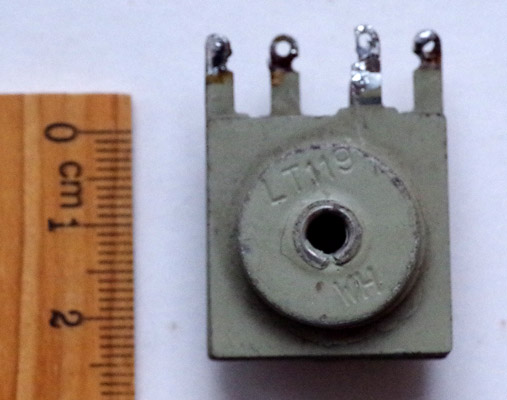
At the opposite end of the scale, this LT119 selenium bridge rectifier in the classic finned shape has a rating of 21.5 Volts maximum, 1 Amp. It is listed in the Wireless World 'Radio Valve Data' book for 1966. It has no logo, just WH stamped into the metal.
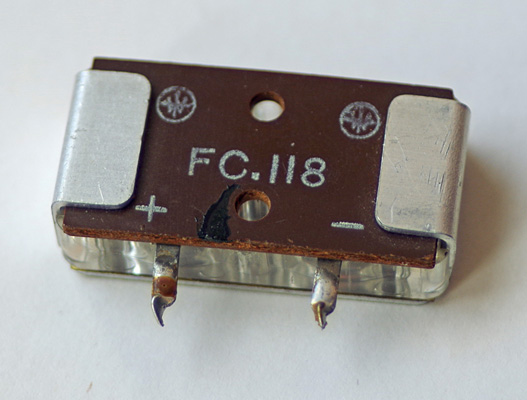
This is a type FC.118 selenium rectifier. It's a contact-cooled type with a perspex body with a phenolic front plate and the usual aluminium back but is NOT marked 'Westalite'. It is listed in the Wireless World 'Radio Valve Data' book for 1966 as a half-wave rectifier, capable of rectifying 125 V r.m.s. at 60 milliamps.
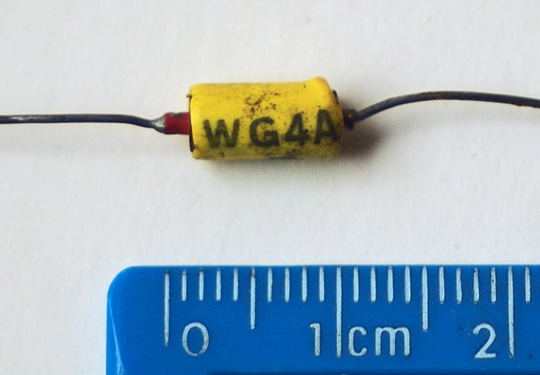
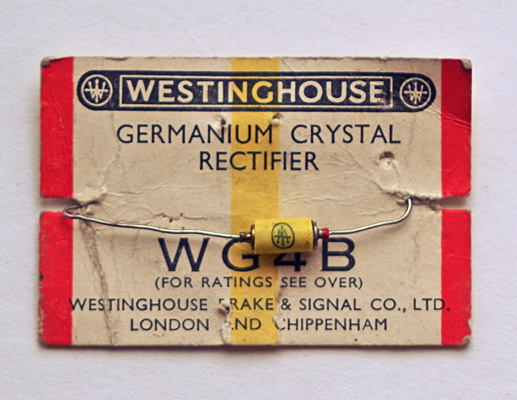
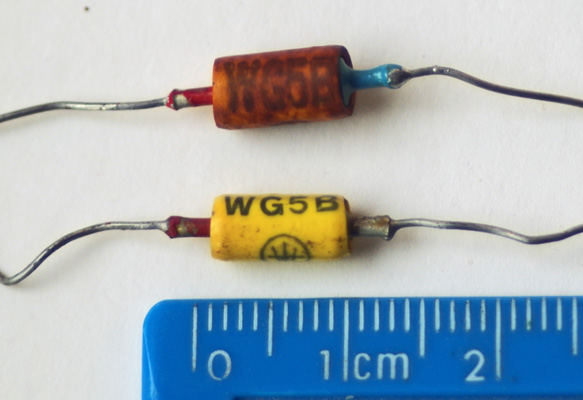
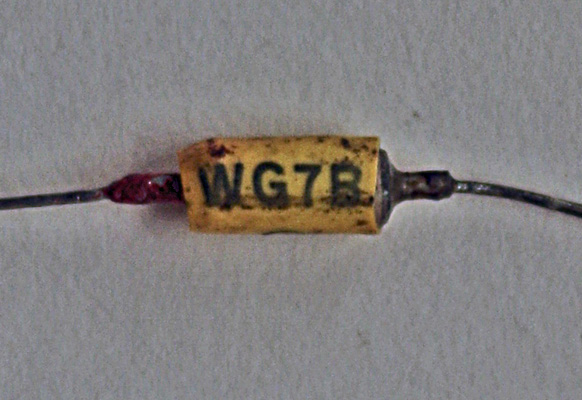
I believe that the first (and only?) germanium devices that Westinghouse Brake & Signal Co made were the WG series of low-current diodes, mainly detectors and instrumentation diodes. The 1958 'Wireless World Radio Valve Data' book lists:
The B suffix indicates lower forward resistance at 1 volt than the A suffix version.
The images show examples of WG4A, WG4B in original packet, WG5B (two slightly different forms, with different-coloured plastic sleeves) and WG7B. I would like to obtain examples of the other WG types. If you know where I might get some, please

In the 1966 'Wireless World Radio Valve Data' book, semiconductors are grouped in various categories. Westinghouse Brake & Signal Co appear in four:
It's slightly puzzling that I have none of these despite many years of gathering old semiconductors from all kinds of sources. I would be interested to see examples of them.
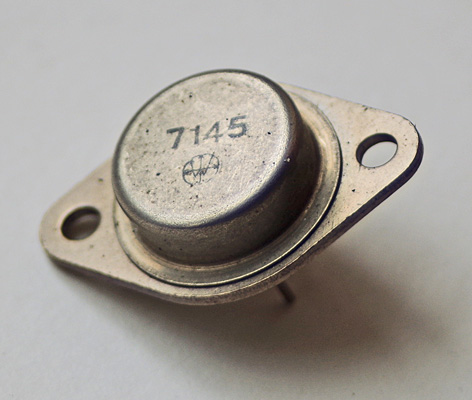
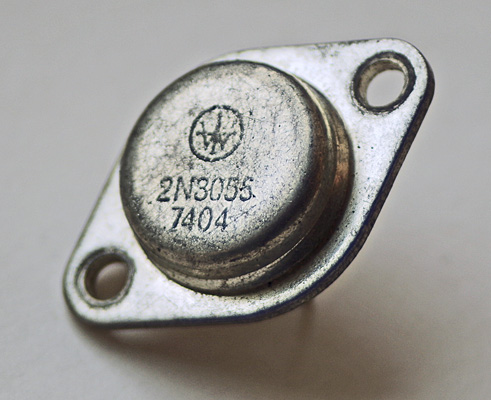
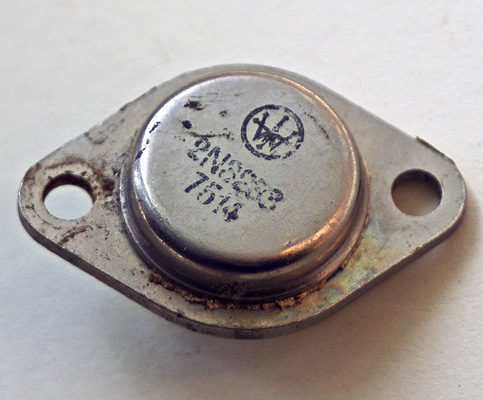
Here's proof that Westinghouse Brake & Signal Co (Westcode by then) did make transistors: an un-named device, presumably a prototype, dated 1971, a 2N3055 dated 1974, and a 2N3233 dated 1975. The last two are general-purpose high-power audio-frequency NPN silicon.
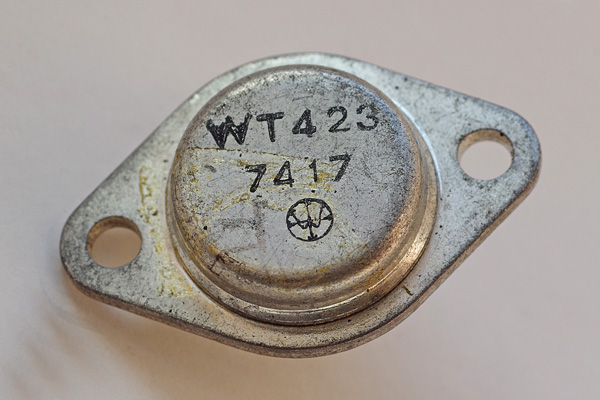
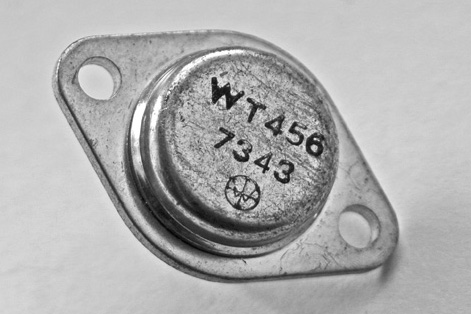
And here are two interesting ones: a WT423 dated 1974 and a WT456 dated 1973. I also have located a WBS data sheet, dated February 1963, that gives the specifications for the silicon power transistors:
These all use the large TO-36 outline, and are 6 Amp types with maximum CE voltages from 40 to 100 Volts.
I would be very interested in examples of, and data about, early transistors (not modern ones) made by Westinghouse Brake & Signal Co. or Westcode, especially germanium ones of course, although I suspect that they did not make any, for I would know about them from the many data books that I possess. If you can provide information about any, please
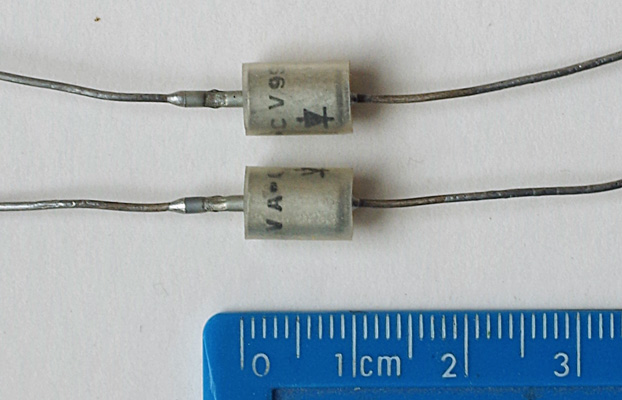
I also have a number of these CV9935 diodes. They look like an SO-2 / TO-1 body, but double-ended. They have VA printed on them, which is the CV-series manufacturer code for Westinghouse Brake & Signal Co. Unfortunately, it is also the CV-series date code for January 1964! (Specification flaw there, I think). All that the 1963 CV Register tells me is that the device is equivalent to BY103, a silicon rectifier. I have found no evidence that WB&S made this type.
If you know where I can find information about this device, please
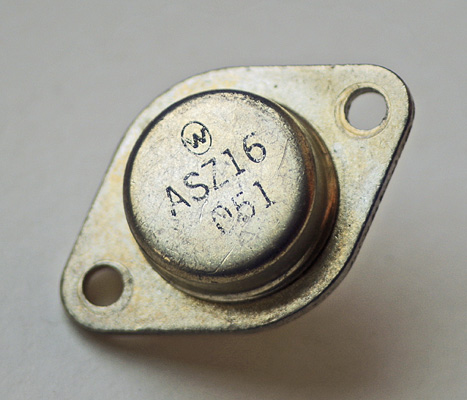
This ASZ16 is a puzzle to me. The logo is closer to the American Westinghouse Electric one, but lacks the underline which I find on their other devices that I own. Also I just think it's implausible that a US company would make a germanium Pro Electron numbered transistor.
If you know where I can find information about this device (for example a Westinghouse Electric data book), please